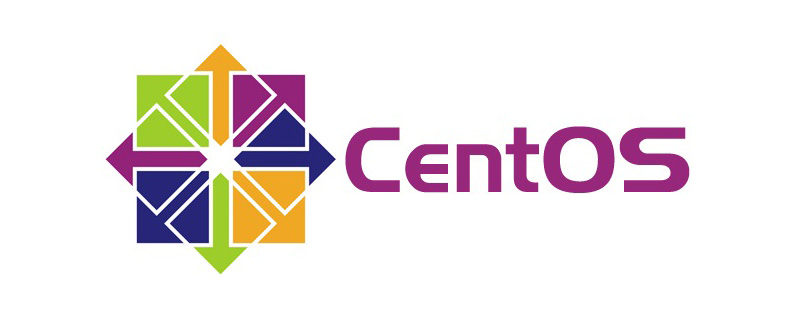How to set up a PHP server environment in CentOS 7?
How to build your own php local server: first install apache; then modify the Apache default website path; then install MySQL; and finally install php and php extensions.

This article mainly introduces the content of building a PHP server environment in CentOS 7. It has certain reference value. Now I share it with everyone. Friends in need can For reference
Install apache
yum install httpd
Configure ServerName
vi /etc/httpd/conf/httpd.conf
Change #ServerName www.example.com:80 to ServerName localhost:80
At this time The external machine enters the IP address of the server, but still cannot see the interface. You need to open the firewall port 80
Open the firewall:
systemctl start firewalld
Open the 80 port:
firewall-cmd --zone=public --add-port=80/tcp --permanent
Restart the firewall:
firewall-cmd --reload
Check whether it is enabled:
firewall-cmd --list-ports
Finally start apache and you can see the apache service interface on the external machine. You do not need to enter the port. Apache uses port 80 by default
systemctl start httpd systemctl enable httpd (加入开机自启)
Note: CentOS7 and 6 use different firewalls and the command to open apache is also different
Modify Apache default website path
Default path/var/www/html
Edit the configuration file:
vim /etc/httpd/conf/httpd.conf
Enter /docu, press Enter, search, you can see there are two /var/www/html places, namely DocumentRoot "/var/www/html" and
Install MySQL
yum install mysql
However, it cannot be started, and an error "Failed to start mysqld.service: Unit not found" will be reported. You need to install mariadb-server
yum install mariadb-server
Open
systemctl start mariadb.service systemctl enable mariadb.service(开机自启)
You also need to open the firewall port 3306. Without going into details, if it is Alibaba Cloud ESC, remember to open the 3306 port in the security group
Change password
use mysql; update user set password=password('新密码') where user='要更新密码的用户名';
Authorization
mysql -u root -p GRANT ALL PRIVILEGES ON *.* TO 'root'@'%' IDENTIFIED BY '123456' WITH GRANT OPTION; FLUSH PRIVILEGES;
Note: Use the SSH channel when using Navicat for remote connection
Install php and php extensions
yum install php yum install php php-fpm php-bcmatch php-gd php-mbstring php-mcrypt php-mysql
Related recommendations:
Sublime Text3 Set up PHP development environment
The above is the detailed content of How to set up a PHP server environment in CentOS 7?. For more information, please follow other related articles on the PHP Chinese website!

Hot AI Tools

Undresser.AI Undress
AI-powered app for creating realistic nude photos

AI Clothes Remover
Online AI tool for removing clothes from photos.

Undress AI Tool
Undress images for free

Clothoff.io
AI clothes remover

AI Hentai Generator
Generate AI Hentai for free.

Hot Article

Hot Tools

Notepad++7.3.1
Easy-to-use and free code editor

SublimeText3 Chinese version
Chinese version, very easy to use

Zend Studio 13.0.1
Powerful PHP integrated development environment

Dreamweaver CS6
Visual web development tools

SublimeText3 Mac version
God-level code editing software (SublimeText3)

Hot Topics
 CakePHP Project Configuration
Sep 10, 2024 pm 05:25 PM
CakePHP Project Configuration
Sep 10, 2024 pm 05:25 PM
In this chapter, we will understand the Environment Variables, General Configuration, Database Configuration and Email Configuration in CakePHP.
 PHP 8.4 Installation and Upgrade guide for Ubuntu and Debian
Dec 24, 2024 pm 04:42 PM
PHP 8.4 Installation and Upgrade guide for Ubuntu and Debian
Dec 24, 2024 pm 04:42 PM
PHP 8.4 brings several new features, security improvements, and performance improvements with healthy amounts of feature deprecations and removals. This guide explains how to install PHP 8.4 or upgrade to PHP 8.4 on Ubuntu, Debian, or their derivati
 CakePHP Date and Time
Sep 10, 2024 pm 05:27 PM
CakePHP Date and Time
Sep 10, 2024 pm 05:27 PM
To work with date and time in cakephp4, we are going to make use of the available FrozenTime class.
 CakePHP File upload
Sep 10, 2024 pm 05:27 PM
CakePHP File upload
Sep 10, 2024 pm 05:27 PM
To work on file upload we are going to use the form helper. Here, is an example for file upload.
 CakePHP Routing
Sep 10, 2024 pm 05:25 PM
CakePHP Routing
Sep 10, 2024 pm 05:25 PM
In this chapter, we are going to learn the following topics related to routing ?
 Discuss CakePHP
Sep 10, 2024 pm 05:28 PM
Discuss CakePHP
Sep 10, 2024 pm 05:28 PM
CakePHP is an open-source framework for PHP. It is intended to make developing, deploying and maintaining applications much easier. CakePHP is based on a MVC-like architecture that is both powerful and easy to grasp. Models, Views, and Controllers gu
 How To Set Up Visual Studio Code (VS Code) for PHP Development
Dec 20, 2024 am 11:31 AM
How To Set Up Visual Studio Code (VS Code) for PHP Development
Dec 20, 2024 am 11:31 AM
Visual Studio Code, also known as VS Code, is a free source code editor — or integrated development environment (IDE) — available for all major operating systems. With a large collection of extensions for many programming languages, VS Code can be c
 CakePHP Creating Validators
Sep 10, 2024 pm 05:26 PM
CakePHP Creating Validators
Sep 10, 2024 pm 05:26 PM
Validator can be created by adding the following two lines in the controller.






